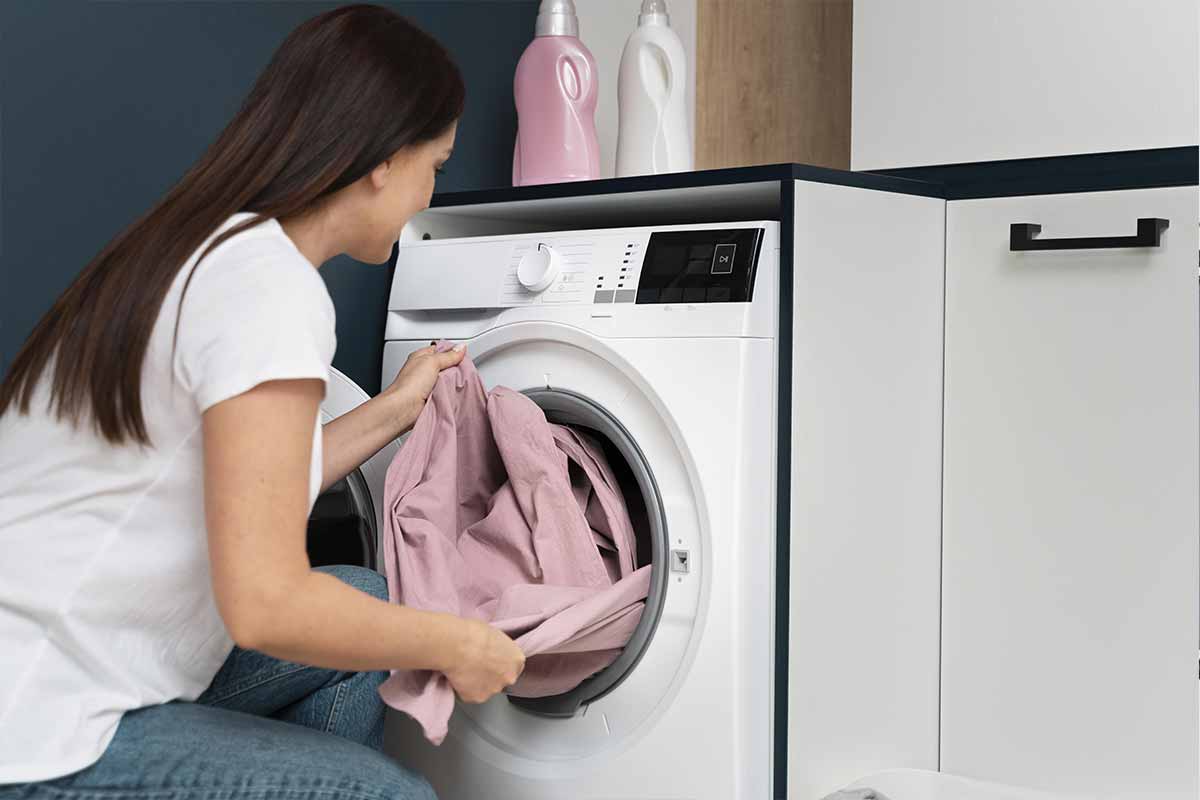Wrinkled sheets can make bedtime less inviting and waste precious laundry time. But the good news is: with a few smart adjustments to dryer load size, fabric choice, and heat settings, you can keep your bedding smooth, soft, and ready for folding.
Here’s a complete guide to preventing wrinkles in your sheets—straight from laundry experts—so you can save time, protect your fabric, and enjoy a neater, fresher bed every night.
Start Fresh: Shake, Spread, and Load Properly
Before tossing sheets into the dryer, give them a good shake. Stretching them out loosens hidden creases and separates the fabric, helping air circulate freely. This simple reset prevents the dreaded “sheet ball,” where damp fabric knots up in the drum.
Next, be mindful of load size. Two sheets with pillowcases are ideal for most dryers. Overloading—especially with towels or blankets—blocks airflow and traps moisture, leaving edges overcooked while the center stays damp.
Laundry expert Elizabeth Shields of SuperCleaning warns: “Overstuffing the drum leads to uneven drying and stubborn wrinkles. Smaller, lighter loads improve hot-air contact and prevent tight creases.”
The takeaway? Space is your ally—less crowding means smoother sheets.
Break Up the Bundle: Dryer Balls, Towels, and Airflow
If you’ve ever pulled out a sheet that looks like a crumpled knot, the fix is simple: dryer balls or clean tennis balls. These bounce around during the cycle, separating layers of fabric, reducing wrinkles, and cutting drying time.
No dryer balls? Toss in a clean, dry towel. It absorbs excess moisture, improves tumbling, and keeps sheets from sticking together. The result: fewer pressure points, more consistent airflow, and smoother seams and hems.
Reusable dryer balls also reduce static cling and soften fabric naturally, letting sheets glide instead of clump. This gliding motion keeps fabric relaxed, preventing harsh creases that would otherwise “set” into place.
Control Heat, Time, and Wrinkles the Smart Way
High heat might seem like a quick fix, but it often backfires. Intense heat dries outer layers too fast, trapping moisture inside the fabric roll. This leads to uneven drying, crisp edges, and wrinkles baked into the cotton.
Instead, use a lower heat for a longer cycle. This allows moisture to escape gradually, while fibers stay supple and smooth.
For extra help, spritz problem areas—like elastic corners or deep hems—with a wrinkle-release spray before drying. The moisture loosens fibers, and as the drum turns, the sheets relax naturally. The outcome? Crisp, hotel-style bedding without ironing.
When Capacity Is the Culprit
Got king-size or deep-pocket sheets? Standard dryers may simply be too small. Large bedding needs space to expand, tumble, and release steam. A larger-capacity dryer gives sheets the room to lift and fall properly, helping moisture escape instead of getting trapped.
If upgrading isn’t an option, split the set: dry the fitted sheet first, then the flat sheet and pillowcases. Smaller loads keep momentum strong, preventing twisted bundles and reducing over-drying at the edges.
Choose Fabrics That Resist Wrinkles
Your fabric choice makes a huge difference. Quick-dry sheets—like microfiber or cotton blends—release moisture faster and wrinkle less. Traditional cotton also does well in percale weaves, which are lighter and more breathable than dense sateen weaves.
If you love heavier fabrics, remember that high thread counts can actually trap heat and moisture, leading to wrinkling. Instead, balance softness with breathability. Lightweight, wrinkle-resistant fabrics save energy, cut drying time, and fold more easily.
Step-by-Step Hacks for Smooth Sheets Every Time
-
Shake before drying: Stretch each sheet flat to break hidden creases.
-
Don’t overload: Stick to two sheets and pillowcases per cycle.
-
Add dryer balls or a towel: Keep fabric separated for faster drying.
-
Use low heat, longer cycles: Prevent baked-in wrinkles.
-
Spritz with wrinkle-release spray: Relax fibers while drying.
-
Upgrade capacity or split loads: Give large sheets more space to tumble.
-
Choose wrinkle-resistant fabrics: Microfiber, cotton blends, or percale.
With these adjustments, your sheets will come out smoother, fresher, and easier to fold—no iron needed.
The Bottom Line
Wrinkled sheets don’t have to be part of your laundry routine. With the right loading strategy, airflow boosters, gentle heat, and smart fabric choices, you’ll save time, energy, and frustration.
Think of it as a long-term investment: smoother bedding means less wear on fabric, lower utility bills, and a more comfortable bed every night. After all, a restful night’s sleep starts with crisp, inviting sheets.
